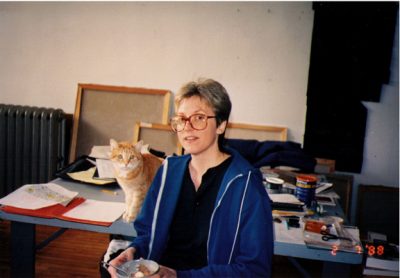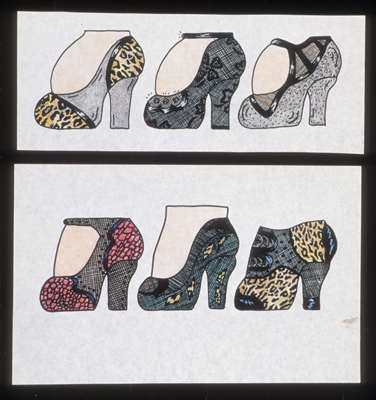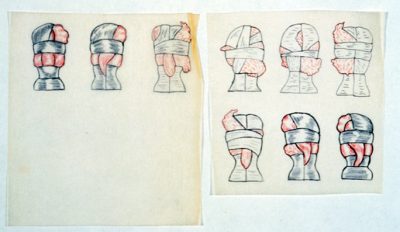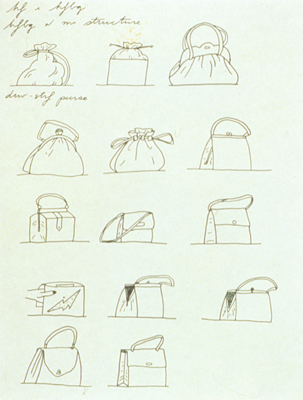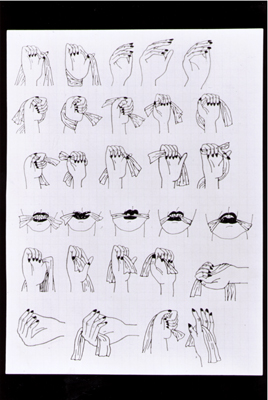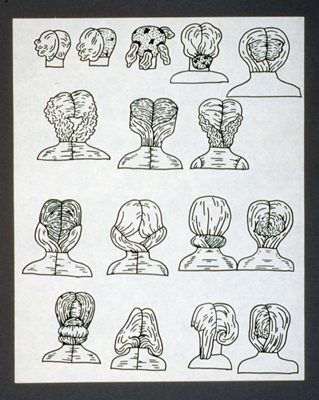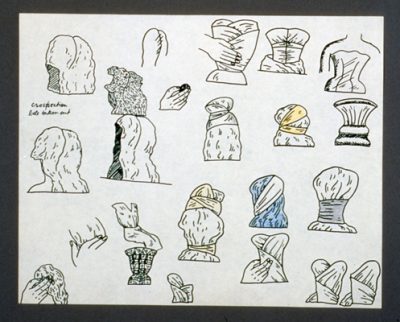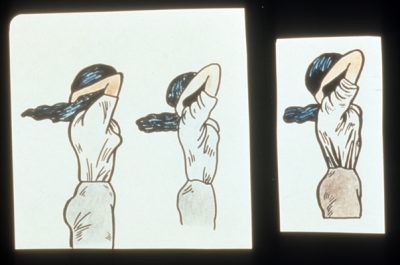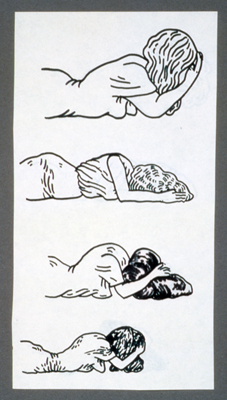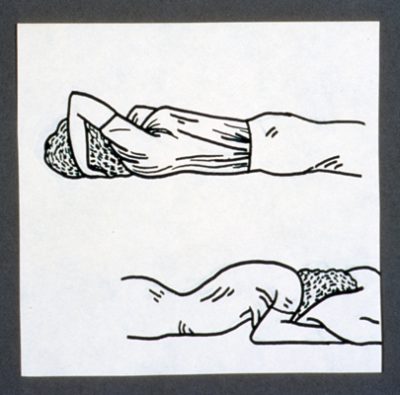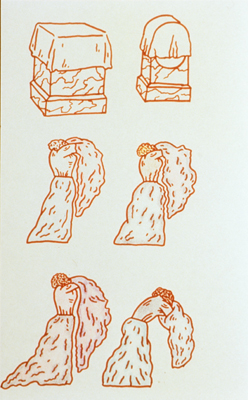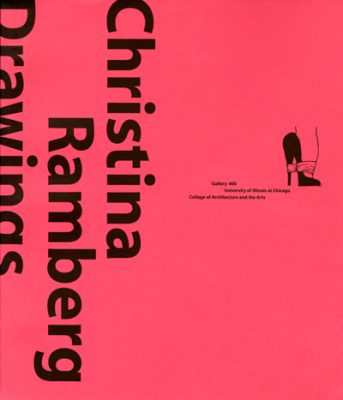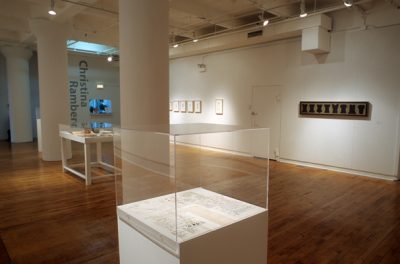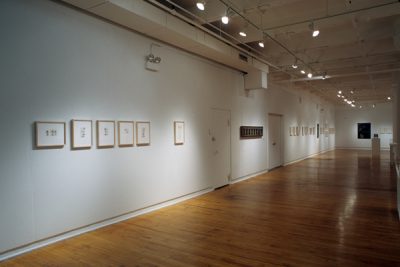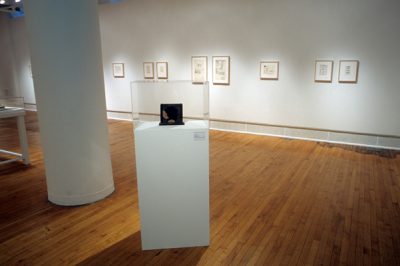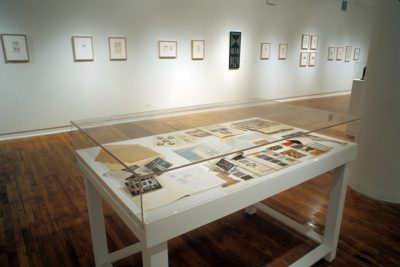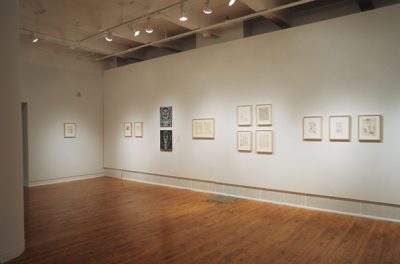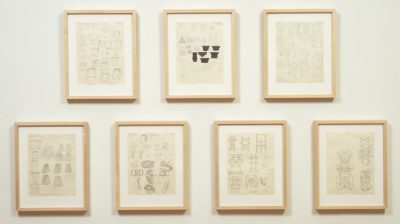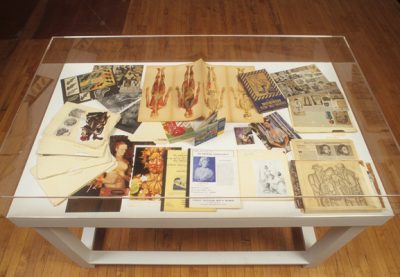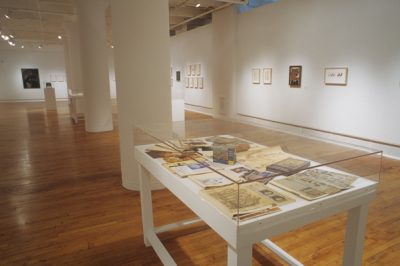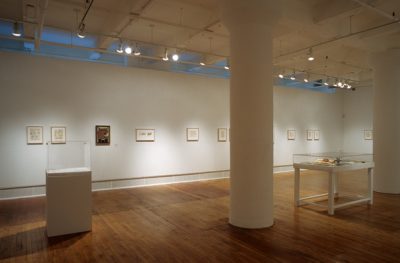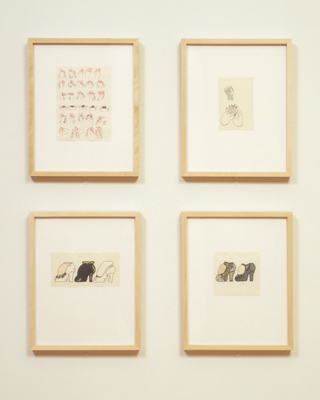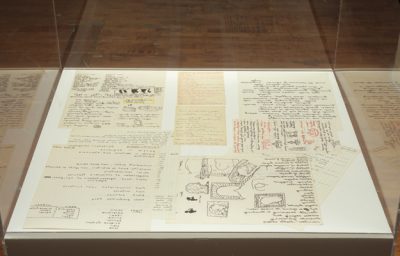Exhibitions
ABOUT THE EXHIBITION
Christina Ramberg: Drawings, organized by Judith Russi Kirshner, Gallery 400, and the College of Architecture and the Arts, was the first retrospective exhibition of the artist ’s work in Chicago, and provided a rare opportunity to view private aspects of the artist’s prolific practice in drawings that informed the paintings for which she is most recognized. All the drawings, sketches, selected writings, and artist’s source materials were generous loans from the Christina Ramberg estate. The significant undertaking of this exhibition utilized the rich holdings of more than 300 sketches and drawings from Ramberg’s estate, which have never before been chronicled, documented, exhibited or researched. It was accompanied by a 128-page catalogue designed by Marcia Lausen. Contextualizing the photo reproductions the catalogue features essays by Judith Russi Kirshner, Molly McQuade, and Barbara Rossi.
Throughout the process of organizing this exhibition, the largest obstacle was a lack of clear chronology, although the majority of the exhibited works were created in the 1970’s and 1980’s. Since relatively few of the drawings were dated, we were unable to produce a checklist for the exhibition. Instead we arranged the works around the themes the artist used. Her varied source material, also on view, provided us with guidance. Selected paintings accompanied the graphic work, underscoring her major artistic themes and illuminating her sensibility.
While she was alive, Christina Ramberg did not exhibit her drawings. Instead, she used them to investigate the morphological processes informing her paintings. This exhibit provided a fascinating first look at a selection of the over 350 drawings in Ramberg’s estate. Demonstrating the artist’s creative process, the exhibition included 140 drawings on index cards, graph paper and tracing paper as well as several vitrines containing original source material. By bringing to light a compelling new layer of her creative practice, this exhibit forced a reevaluation of Ramberg’s career as well as offered new insight into the history of Chicago post-war art in general.
An artist and an educator, Christina Ramberg was a dynamic presence in the Chicago artistic community from the 1960s to her death in 1995. She was traditionally associated with the Chicago Imagists, and shared their practice of quoting liberally from popular culture. Her fascinating imagery may be understood and appreciated for both its formal strength and its subjective iconography. Her work reveals a wide range of visual influences, including printed advertisements, fashion layouts, medical illustrations, costume history, and quilting. Ramberg was concerned with the implications of mass culture, as well as vernacular representations of femininity and the body. Initially produced during the rise of the feminist movement, Ramberg’s drawings continue to speak to contemporary gender concerns, as well as perceptions of gender identity and objectification of the female body. She is widely regarded as a central figure in the history of contemporary art in Chicago and in the history of feminist art. In light of her significant contributions, the compelling aesthetic and psychological qualities of Ramberg ’s work are particularly relevant for today’s audiences.
Ramberg’s work, however, stands apart from the Imagists’ in its particularly feminist sensibility, evidenced in her use of erotically charged, fetishized female imagery. Ramberg’s depictions of women evade a simplistic, authoritative reading. Her careful formal technique, using quiet colors and precise lines, belies a messy subject full of torture and desire. Fragmented and cropped, bound and gagged, Ramberg’s women describe an imploding force of repressed female desire.
Many of Ramberg’s drawings describe multiple transformations of a single subject. In her review, Amanda Henry notes that the “[w]omen’s bodies are not just associated with domestic objects, they are taken over by them. ” For instance, a woman’s head of hair turns into a head of lettuce, a plastic bag, and pair of pantaloons. By combining disparate elements – underwear with medical supplies, bandages with brassieres – Ramberg made the innocuous threatening and the everyday strange.
Working with wit and skill within the confines of a rigorously formal application of painterly elements, Ramberg illuminated the psychological binds she experienced and observed firsthand. Her process tends toward the voyeuristic: her cropped, fetishized female torsos are wrapped and unwrapped, bandaged and unbandaged, fragmented and fulfilled. Her work addresses the symbolic interpretations of women’s appearances and bodily gestures as codes of representation with ongoing historical, political, and social implications. Understood through the lens of more recent critical insight, the subject matter and manner of representation that Ramberg’s drawings employ may be seen to work in tandem with the theoretical discourses of signification and identification. Reflecting the immediate cultural implications of mass, popular, vernacular, and individual representations of femininity and the body, Christina Ramberg is undoubtedly an artist of continuing relevance.
This exhibition traveled to four other institutions: The Ben Maltz Gallery (Otis College of Art and Design, Los Angeles), Herron Gallery (Indiana University-Purdue), Madison Art Center (Madison, Wisconsin) and Marsh Art Gallery (University of Richmond, Virginia).
ARTISTS
Christina Ramberg
SUPPORT
Christina Ramberg: Drawings is made possible by the College of Architecture and the Arts, the School of Art and Design, and supported in part by grants from the National Endowment for the Arts, the Illinois Arts Council, a state agency, and the Chicago Foundation for Women. This exhibition is also made possible with the support of Ruth Horwich, Alexander Hanson, Philip Hanson, and generous individual donors.


